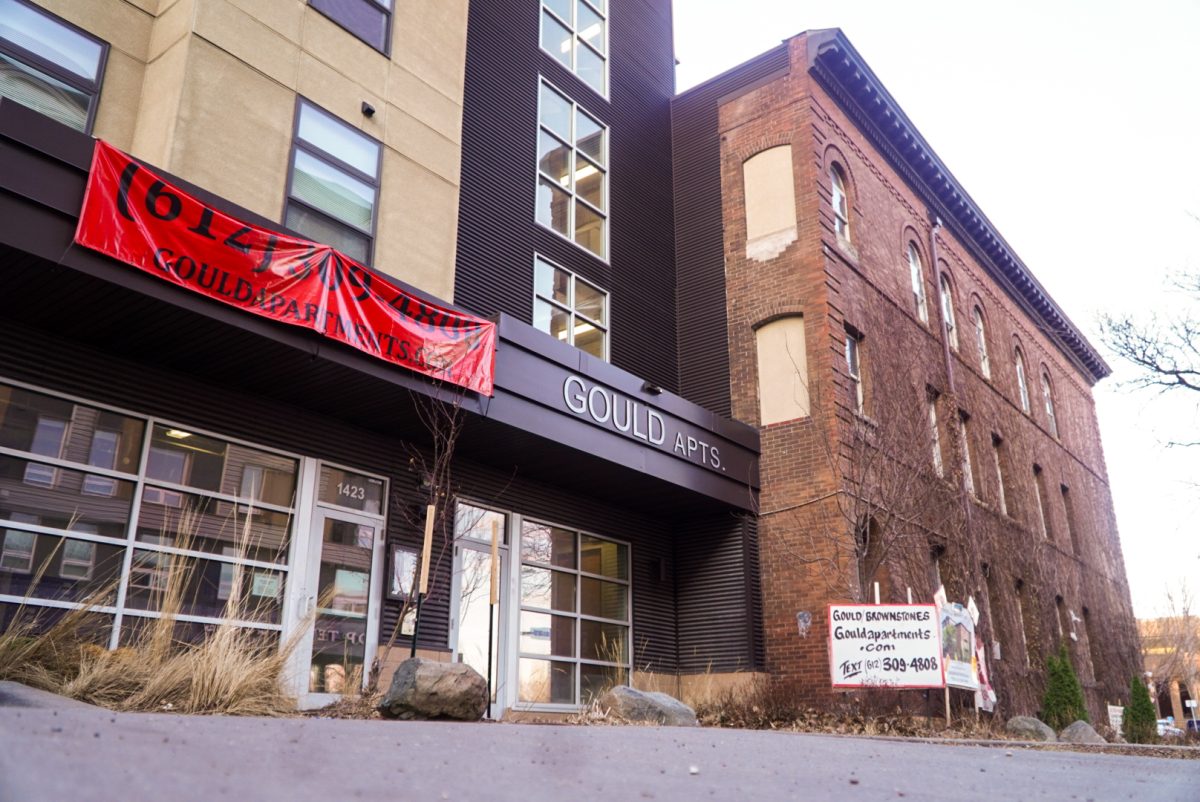Sitting in a circle with several other then-high school girls, Claire Loveall admitted she masturbated.
One by one, so did the others.
Now a University of Minnesota first-year student, Loveall said she divulged the secret to defend a friend who was ridiculed for mentioning female self-pleasure.
Hesitation to discuss masturbation exemplifies the sex talk taboo, said Bielca Guevara, an HIV health educator at West Side Community Health Services in Minneapolis. She said Minnesota’s abstinence-driven sexual education policies often leave teens unprepared for their first time.
At many schools in the state, health teachers stick to basic information about abstinence and reproduction. Though national education standards recommend
including consent and sexual orientation in curriculum, many schools don’t follow those optional guidelines.
Abstinence-only supporters continue to vie for the method they consider most moral, but with mounting research backing comprehensive sex education, teachers are considering abandoning a no-sex-until-marriage model.
Democratic Minnesota legislators have proposed a bill — most recently in 2014 — to amend and standardize sex education rules statewide, to consistent Republican pushback.
And while federal funding regulations passed in December nixed allocations for abstinence-only education, experts worry that the state’s soaring STI rate and persistent questions surrounding sexuality by young adults indicate Minnesota students aren’t getting enough information.
Mandating an unsupervised territory
Two state statutes allow each school district to create its own sex education lesson plans and offer an out to parents who disagree with the curriculum.
 State laws also mandate that districts provide education that helps prevent STIs. The program must be “comprehensive, technically accurate and [contain] updated curriculum that includes helping students to abstain from sexual activity until marriage,” according to the law.
State laws also mandate that districts provide education that helps prevent STIs. The program must be “comprehensive, technically accurate and [contain] updated curriculum that includes helping students to abstain from sexual activity until marriage,” according to the law.
The statute does not give specific guidance to the state’s 328 public schools, meaning teachers have to interpret the law on their own, said Matt Toburen, Minnesota AIDS Project public policy director.
A second statute allows parents or guardians to review a school’s curriculum and arrange alternative lessons for their children if they don’t approve of the sex education curriculum.
In health teacher Mary Hanson’s 26 years at Willmar Middle School, she said only five students have been pulled from class.
Sex education classes can be contentious for some parents if the curriculum contradicts their beliefs, said Jenny Oliphant, a University pediatrics and adolescent health
researcher.
About one in 10 Minnesotan parents surveyed prefer abstinence-only education for their children, a 2007 University study said.
But many parents are misinformed on certain topics, said Annie Elmer, an HIV awareness educator and activist. For example, she said, a mother didn’t let her child hear Elmer’s lecture on her experience being HIV-positive because she thought that HIV is contagious. 
Parnell Mahoney, a University campus minister with Maranatha Christian Fellowship, said he would exercise his right to withdraw his 7-year-old child from sex-ed classes if the time comes.
“Sex education should be a parental responsibility,” Mahoney said. “If it was me, I’d rather talk to my kids about it than have someone else talk about it.”
In 2010 and 2014 sessions, state legislators introduced bills that would create medically accurate and age-appropriate “responsible family life and sexuality education” for grades six through 12. One bill called for “abstinence-first” teaching, which Toburen said advocates delaying sexual activity instead of waiting until marriage and provides information on contraceptives.
A lack of interest by Republican legislators to back the bill kept it from passing, Elmer said.
The bill’s authors have watered it down each session to garner more support, she said.
Rep. Jim Davnie, DFL-Minneapolis, who authored a version of the bill, said it’s too early to speculate if it will be brought up again next session.
Teens talk sex in and out of the classroom
Studies show abstinence-only education contributes to a rising STI rate, and experts say comprehensive sex education does the opposite. Now, schools in the state are beginning to consider broader approaches.
About 95 percent of Minnesota high schools included the benefits of abstinence in their sex education classes in the 2013-14 school year, according to a 2014 Centers for Disease Control and Prevention report. Nearly 80 percent taught the significance of using a condom at the same time as another contraceptive.Some proponents of abstinence-only education argue providing information on contraceptives encourages sex earlier.
Rep. Bud Nornes, R-Fergus Falls, said he thinks teaching abstinence prevents sexual behavior among teens.
“If you’re not emphasizing [abstinence], you’re emphasizing trouble,” he said. “[Teenage sex] is getting out of control, so obviously what we’re teaching isn’t working. It’s certainly not resulting in less activity of that nature.”
Schools are increasingly educating students on methods of protected sex so those who choose to have sex will know how to do it safely, said Lisa Turnham, an adjunct faculty member in the University’s School of Public Health.
Doug Linton, a health teacher at Henry Sibley High School in Mendota Heights, Minn., said the school requires sophomores to take a three-week sex education class. While it currently centers on abstinence, the school plans to update the curriculum to include topics like consent and sexual orientation, both part of national standards.
University journalism senior Sam Utterberg said he first learned about sex in a one-day, gender-separated class in fifth grade.
When he and his peers revisited the topic in high school at Robbinsdale Cooper, Utterberg said they covered STIs in depth but weren’t taught how to put on a condom.
“They talked about what could happen with sex and STDs and stuff,” he said. “A lot of fear tactics … the whole dirty needles and AIDs thing. I didn’t pass out, but I got pale in the face.”
Experts say teaching teens how to use a condom lowers teen pregnancy and STI rates. STI rates hit a record high in the state in 2015, according to state health department data released earlier this month, and young people ages 15 to 24 were hit hardest.
At the same time, just more than half of University students used a condom the last time they had vaginal sex, down 8 percent since 2007, a 2015 Boynton Health Services survey reported.
And about half of all people have had sex by the time they finish high school, though just more than half of Minnesota students learned in school how to use a condom before heading off to college, according to the CDC.
Kendra Hinz, a physical education and health teacher at Mankato West High School, said the district bans her from teaching how to use a condom.
“Not even on a plastic model or a banana,” she said. “It’s more than just taking it out of the package; they aren’t getting those skills they need to use them.”
University students with questions on STIs most often don’t know what symptoms to look for, Sexual Health Awareness and Disease Education coordinator Rachel Seiler said.
“A lot of times in high school sex ed and middle school sex ed, we’re shown pictures,” she said. “We tell them that not every STI looks like that.”
But for some, lessons from teachers and parents can be overshadowed by Internet images, said University English senior Eric Ambroz. His sex education started in third grade, when he said he learned about sex from the porn his two older brothers showed him.
“When you grow up with older brothers, you get exposed to this stuff a lot earlier on,” he said.
Porn is a new topic in sexual education expert Deb Snouffer’s “Our Whole Lives” class for teenagers. Hers is part of a nationwide program that teaches comprehensive sex education to kindergarteners through adults.She said pornography rarely depicts safe or realistic sex practices and can damage a child’s body image.
 “[The porn industry] shows a lot about the American sex-ed system,” said Loveall, a University first-year. “People are going online to go and find videos that have been edited and produced where people are sitting on the sidelines telling people exactly what to do … in order to figure out what sex is.”
“[The porn industry] shows a lot about the American sex-ed system,” said Loveall, a University first-year. “People are going online to go and find videos that have been edited and produced where people are sitting on the sidelines telling people exactly what to do … in order to figure out what sex is.”
“All you have to do is say ‘turnips’”
University theater arts senior Katie Korpi and her girlfriend Cina Dean experienced opposite ends of the sexual education spectrum back in grade school.
Dean, 22, grew up in Forest Lake, Minn., where her sex education program was abstinence-only and focused solely on straight relationships. The first class, a guest presentation on abstinence, lasted one day.
“What she taught was hetero-normative abstinence for straight junior high students,” Dean said. “And her shtick was, if you feel the pressure to have sex before marriage, all you have to do is say ‘turnips,’ and all that built-up sexual tension will disappear because no one can possibly think turnips are sexy.”
The speaker handed out stickers that said things like “turnips” and “zipper up,” Dean said. Students didn’t receive information on sexual orientation, healthy relationships or safe sex practices for LGBT people.
She taught herself about those topics instead and created a gay straight alliance in her high school, though school administrators initially rejected it as an official student group.
In recent years, national sex and health education standards have been amended to include LGBT-inclusive education.
Just 11.2 percent of middle and high schools in Minnesota adhere to those standards, a 2014 CDC report said. The state’s LGBT teens also report engaging in more sexual activity than their straight counterparts, according to a report by Teenwise Minnesota, a defunct advocacy group for adolescent sexual health.
Korpi, Dean’s girlfriend, attended a charter high school where health class wasn’t required, she said. Instead, her parents sent her to an “Our Whole Lives” class at the Unitarian Universalist Association in Bloomington, Minn.
Snouffer, who teaches an OWL class in downtown Minneapolis, said students today are better versed in LGBT topics than their parents are.
Loveall educated herself on sexual orientation issues via the Internet and said she brought additional questions to her health teacher, who was also the school’s football coach.
“I remember asking questions about that, and my teacher didn’t really know,” she said. “He wasn’t an expert on those types of questions about sexuality. He’s used to being on a football field and taping someone’s ankle when they sprain it.”
Her teacher was in the same pool as Willmar’s Mary Hanson — teachers who have to answer questions they’re not trained to address.
“We have to educate ourselves,” Hanson said. “They ask questions about bisexuality, transsexual … just the amount of things they are exposed to with technology … there’s a lot of inaccurate information out there.”
Feds call to defund abstinence-only education
A federal initiative passed in December that integrates health education into a “well-rounded” curriculum could open doors for additional federal funding for Minnesota.
In the 2014 fiscal year, federal entities like the U.S. Department of Health and Human Services and the CDC gave about $6.1 million to local and state agencies for programs that target teen pregnancy prevention.
 Abstinence-only education also received funding that year, but Obama eliminated a $10 million-a-year abstinence-only grant — which, along with others of its kind, has allocated more than $1.2 billion over the last 25 years — from the 2017 federal fiscal budget.
Abstinence-only education also received funding that year, but Obama eliminated a $10 million-a-year abstinence-only grant — which, along with others of its kind, has allocated more than $1.2 billion over the last 25 years — from the 2017 federal fiscal budget.
President Obama announced in December the Every Student Succeeds Act, an amended version of the No Child Left Behind Act. The legislation will open up new avenues for federal funding for health education in schools. Each state also needs to create a plan for health education under the act, but specific requirements haven’t been released.
“With that said, [Minnesota’s] requirements for health education will not change,” Craig Wethington, Minnesota Department of Education’s director of the school safety technical assistance center, said in an email.













